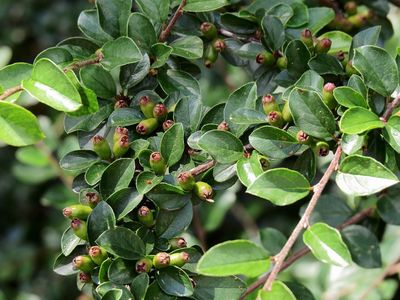Spreading Cotoneaster Info
Spreading cotoneaster plants (Cotoneaster divaricatus) are native to central and western China. They are very tolerant of the cold and are hardy down to USDA zone 4. They reach a mature height of 5 to 7 feet (1.5-2 m.), with a spread that is equal or slightly greater. The shrubs have a distinctive growing pattern that earns them their name, with branches that grow horizontally for several feet (1 to 2 m.) before sweeping slightly downwards. These branches tend to reach right down to the ground. The leaves are glossy and dark green, turning attractive shades of yellow, red, and purple in autumn before eventually dropping. Attractive spring clusters of small, pink flowers give way in autumn to numerous bright red berries that are very eye catching and last through early winter.
How to Grow Spreading Cotoneaster Shrubs
Spreading cotoneaster care is relatively easy. This cotoneaster plant likes full sun to partial shade and moist, well-drained soil. It is extremely tolerant of less than ideal conditions including poor soil, alkaline soil, salt, drought, wind, and soil compaction. Because of this, it is well suited to urban environments. It is also very resistant to pests and diseases that are known to affect other varieties of cotoneaster, making it an excellent choice over its problem-prone cousins. This cotoneaster can withstand heavy pruning and works well as a hedge, though many gardeners choose to leave it untrimmed because of its unique spreading habit. This, paired with its attractive, bright red berries, make the plant a good choice for a specimen shrub in the landscape.
